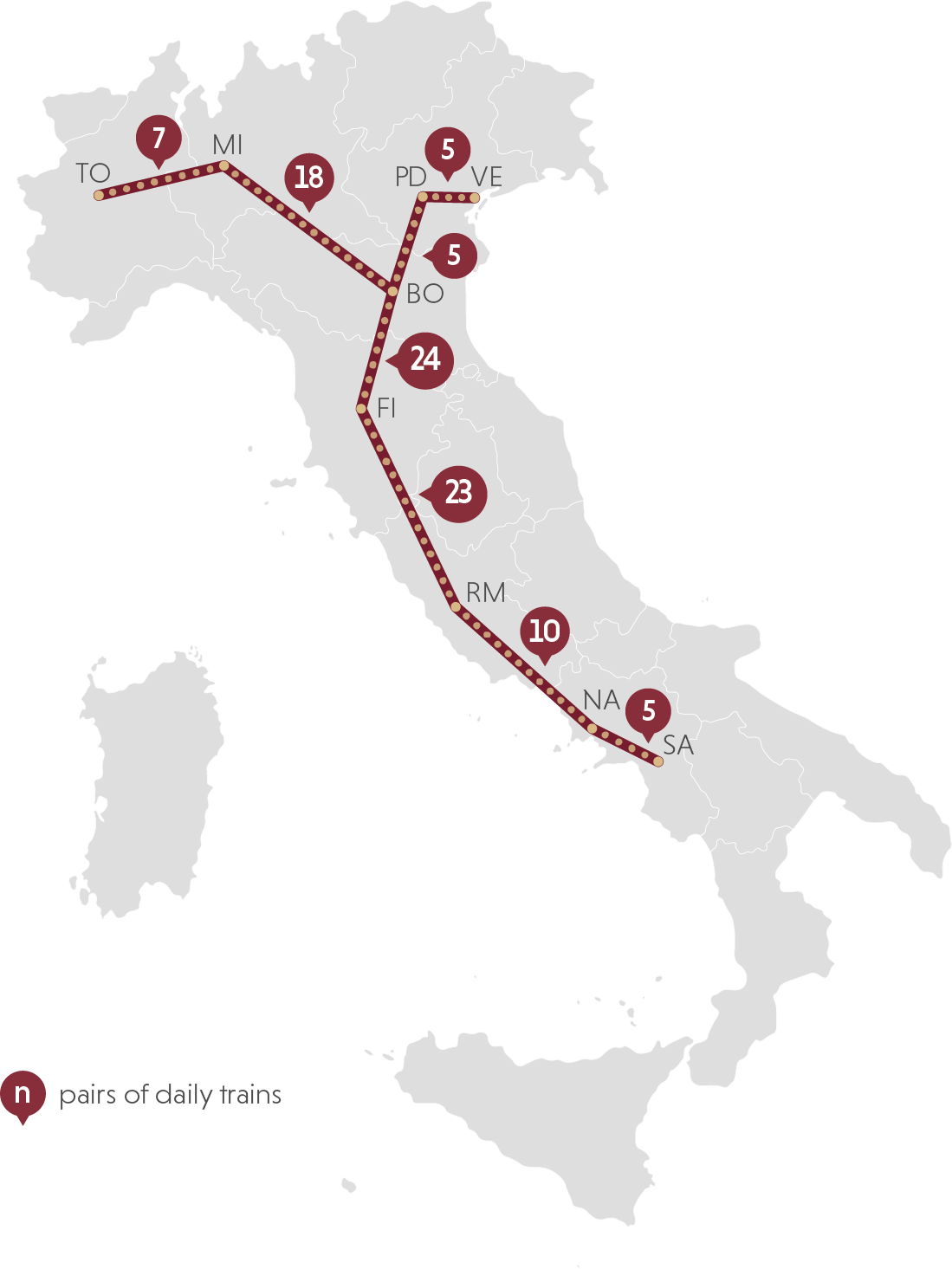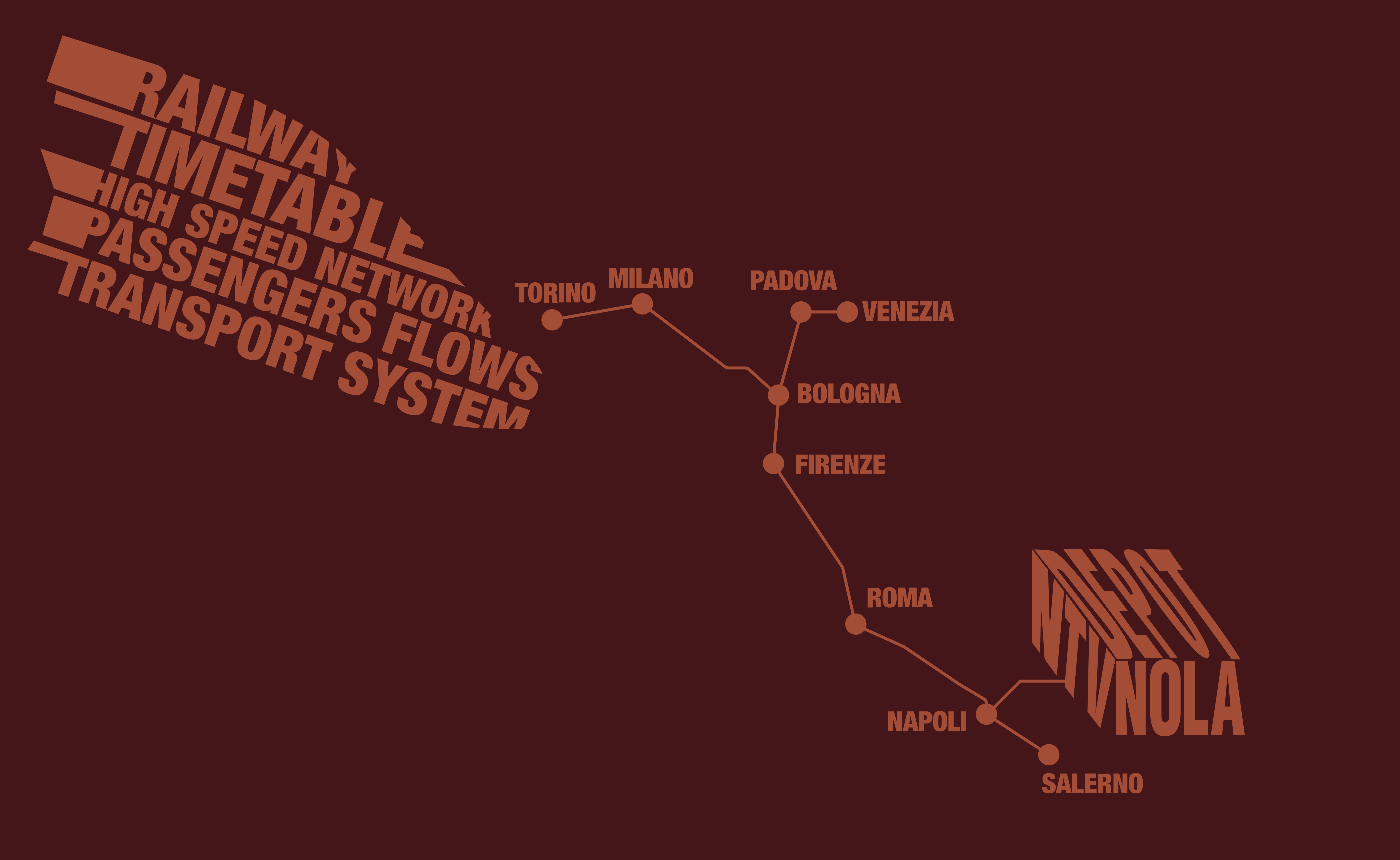A new player in the high-speed market in Italy
Study forecasting the passenger demand for the NTV S.p.A. service
In 2011, a great revolution in the transport world was about to take place in Italy – the network of High-Speed railway services was opening to the market in the light of the evolution of the European regulatory framework on transport services.
In this situation, Net Engineering was called on to support the new service company Nuovo Trasporto Viaggiatori (NTV) in understanding the ‘attackable’ share of the railway market so that economic-financial objectives could be set and the strategies to achieve them established. The aim of the study, which lasted several years, was to estimate the demand for mobility potentially interested in the services offered by NTV, and so its earnings, in terms of quality, service on board, timetable, pre- and post-journey accessory services. Basically, an ambitious, complex project in a situation very different from the current one where there was no private High-Speed service (Trenitalia operated in a substantial monopoly), fare-setting wasn’t subject to market logics and the performance of the system wasn’t yet 100% (the Florence-Bologna section was still incomplete). It was a project that should have provided answers to essential questions – who would change companies for better services by moving from Trenitalia to NTV? What was meant by ‘better services’ – better passenger reception, tastier meals on board, more pleasant, comfortable spaces in the station, more functional timetables, more accessible railway stations? And what fares?

The project was set in the wider context of multi-modal connections where, referring specifically to movements between Rome and Milan, flying had a significant role and the car was a valid alternative on some short-medium range motorway sections (Rome-Naples, Rome-Florence, Turin-Milan and Florence-Bologna). Therefore, there was also the assessment of the trade-off between the train and alternative methods of transport, particularly engrained in users’ habits – who would leave flying for NTV and who would leave their car at home to climb onto a new train?
Lastly, the project also had to understand how passengers would have reacted to the new brand, a new train that had never been seen before, and pricing policies that no-one could imagine with any certainty. In particular, what countermeasures would the other transport providers (railway, air and road) have taken in terms of service, fares and sections managed?
However, the greatest challenge of the project was to succeed in estimating the number of passengers of a rail service that had never existed in a competitive situation that still had to be understood and quantified.
Speaking strictly technically, the analyses were conducted by developing a system of mathematical models, appropriately calibrated based on mobility surveys (interviews and counts) which, starting from the estimate of the origin-destination movement matrices for the various means of national transport, enabled the number of passengers on individual trains to be estimated in relation to alternative scenarios in terms of timetable, stops, fares, quality of the services offered, accessibility to transport terminals (stations and airports) for both public and private transport, and competitors’ marketing policies.
“In such a large, complex city as Rome, for example, stopping at Tiburtina or Termini stations meant being attractive, or not, for a part of the city. Stopping at Ostiense could even influence competition with flying as it serves an area of the city closer to Fiumicino airport.”
The methodological approach was rigorous, complex and effective, so much so that it earned publication in the “Ingegneria Ferroviaria” magazine (Railway Engineering, the official organ of the Collegio Ingegneri Ferroviari Italiani – Board of Italian Railway Engineers) as well as various presentations in Italy and abroad.
The study was developed under the supervision of an International Scientific Committee made up of the top names in world transport planning, including Prof. Ennio Cascetta and Prof. Moshe Ben-Akiva of MIT, Boston.
For NET Engineering International, taking part in the NTV project meant being among the key players in the great HS revolution, a historic event which has profoundly changed the face of the national transport system and the Italian economy.
Estimated NTV train service: number of trains/day (pairs) on each route




